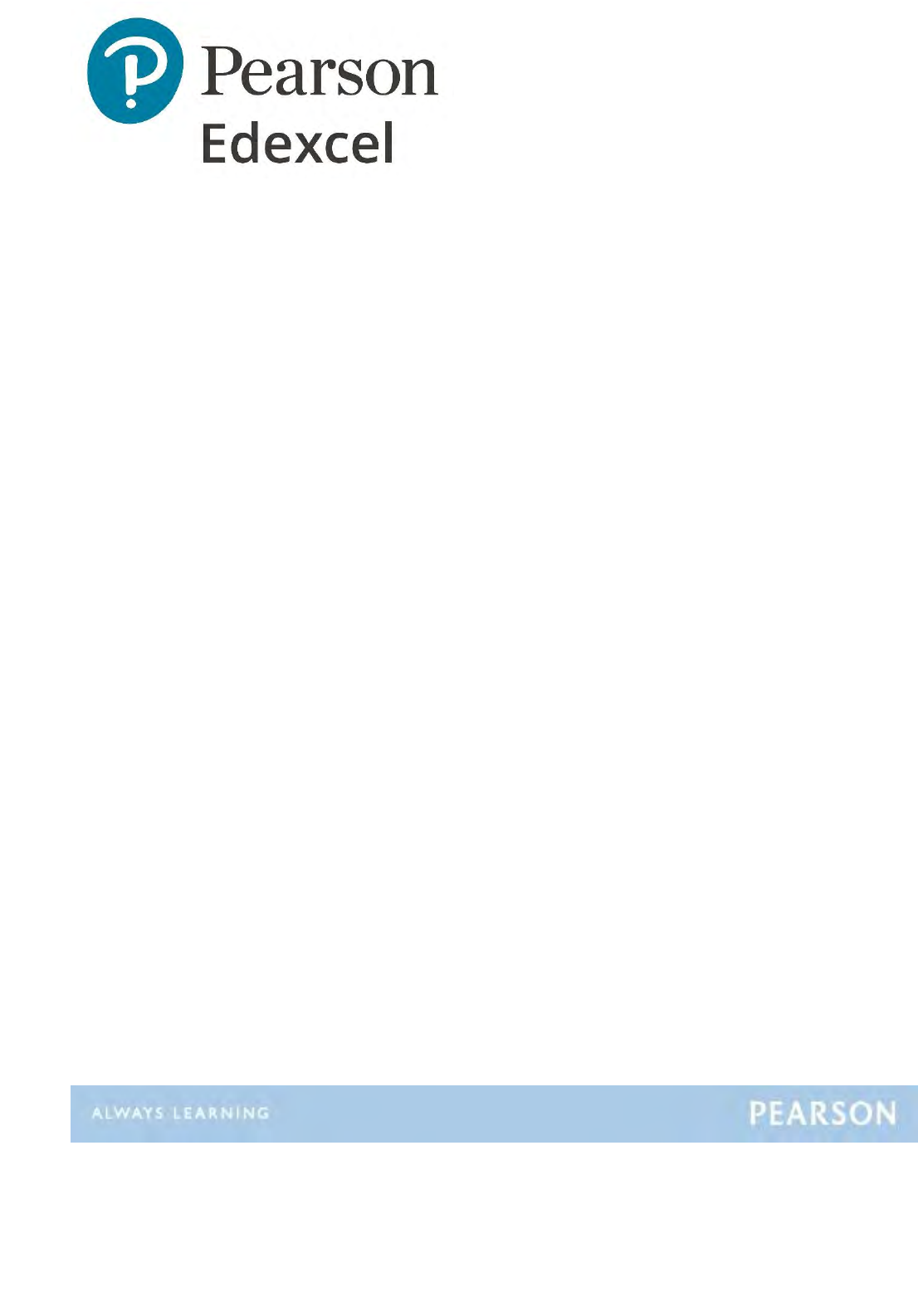
Mark Scheme (Results)
November 2020
Pearson Edexcel GCSE
In English Language (1EN0)
Paper 1: Fiction and Imaginative Writing
PMT
2
General marking guidance
• All candidates must receive the same treatment. Examiners must mark the last
candidate in exactly the same way as they mark the first.
• Mark schemes should be applied positively. Candidates must be rewarded for
what they have shown they can do rather than be penalised for omissions.
• Examiners should mark according to the mark scheme – not according to their
perception of where the grade boundaries may lie.
• All the marks on the mark scheme are designed to be awarded. Examiners
should always award full marks if deserved, i.e. if the answer matches the
mark scheme. Examiners should also be prepared to award zero marks if the
candidate’s response is not worthy of credit according to the mark scheme.
• Where some judgment is required, mark schemes will provide the principles by
which marks will be awarded and exemplification/indicative content will not be
exhaustive.
• When examiners are in doubt regarding the application of the mark scheme to
a candidate’s response, a senior examiner must be consulted before a mark is
given.
• Crossed-out work should be marked unless the candidate has replaced it with
an alternative response.
Marking guidance – specific
• The marking grids have been designed to assess student work holistically. The
grids identify the Assessment Objective being targeted by the level
descriptors.
• When deciding how to reward an answer, examiners should consult both the
indicative content and the associated marking grid(s). When using a levels-
based mark scheme, the ‘best fit’ approach should be used.
• Examiners should first decide which descriptor most closely matches the
answer and place it in that level.
• The mark awarded within the level will be decided based on the quality of the
answer and will be modified according to how securely all bullet points are
displayed at that level.
• In cases of uneven performance, the points above will still apply. Candidates
will be placed in the level that best describes their answer according to the
PMT
3
Assessment Objective described in the level. Marks will be awarded towards
the top or bottom of that level depending on how they have evidenced each of
the descriptor bullet points.
• Indicative content is exactly that – it consists of factual points that candidates
are likely to use to construct their answer. It is possible for an answer to be
constructed without mentioning some or all of these points, as long as they
provide alternative responses to the indicative content that fulfil the
requirements of the question. It is the examiner’s responsibility to apply their
professional judgment to the candidate’s response in determining if the
answer fulfils the requirements of the question.
PMT
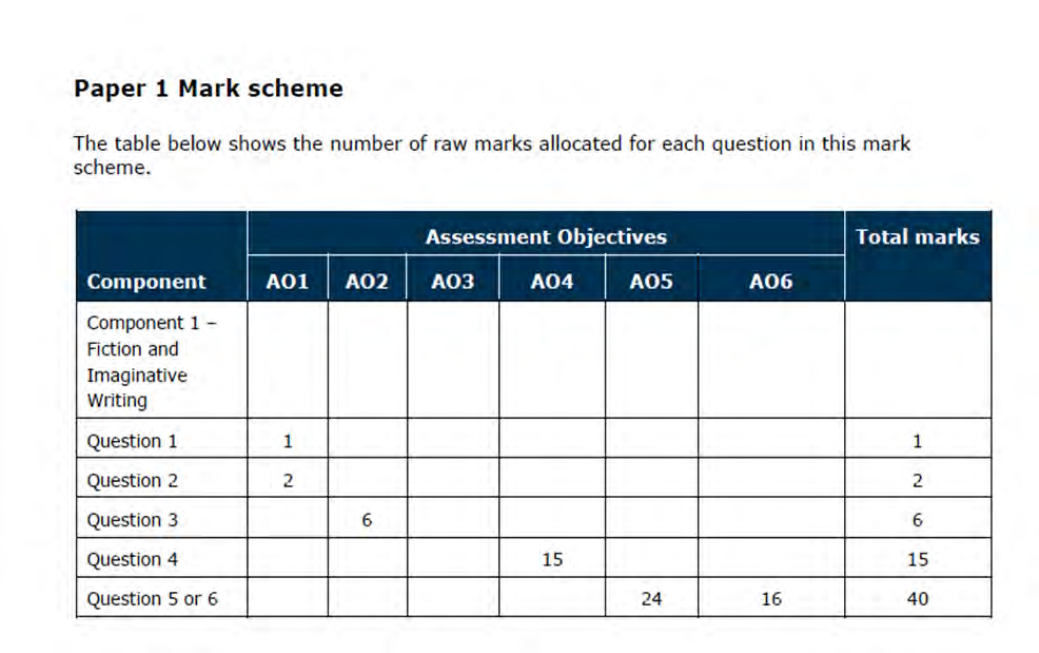
4
PMT

5
Section A: Reading
Question
Number
AO1: Identify and interpret explicit and implicit
information and ideas
Mark
1
The answer must be taken from lines 2-4 and the word
must be included:
(my dear) young (friend)
(1)
Question
Number
AO1: Identify and interpret explicit and implicit
information and ideas
Mark
2
Accept any reasonable answer based on lines 17-20, up to a
maximum of 2 marks.
Quotations and candidate’s own words are
acceptable.
• beautiful (expanse)
• (bathed in soft, yellow) moonlight
• the scene is so suffused with light that it is ‘almost as
light as day.’
• the light is described as ‘soft’
• ‘the distant hills became melted’
• the shadows are described in attractive terms: ‘velvety
(blackness)’
• there is ‘beauty’ in the scenery
• the scenery improves the narrator’s mood, making him
feel cheerful
• the narrator feels ‘peace and comfort’ when looking at
the scene.
(2)
PMT

6
In responses to the following question, examiners should be aware of the different
ways candidates may structure their responses. There should be sufficient evidence
analysing both language and structure to reward responses. Responses that are
unbalanced cannot access Level 2 or above, where analysis of both language and
structure is required.
Question
Number
Indicative content
3
Reward responses that explain how the writer uses language and structure to
show the narrator’s thoughts and feelings about the Count in lines 24–38.
Responses may include the following points about the language of the text:
strong abstract nouns used to show his immediate sense of horror: ‘repulsion
and terror’
use of phrases to indicate his certainty that it was the Count: ‘I knew the man’, ‘I
could not mistake’
use of simple connective to indicate his immediate change in feelings: ‘But’
use of allusion, suggesting that the Count is connected with hell, as the Count is
descending into ‘that dreadful abyss’
use of similes to suggest that the Count may not be entirely human: ‘like great
wings’, ‘just as a lizard moves along a wall’
use of a number of words and phrases to question his earlier certainty: ‘I could
not believe my eyes’, ‘some trick of the moonlight’, ‘some weird effect’.
Responses may include the following points about the structure of the text:
this section of the passage begins with mild amusement but quickly builds to
absolute terror; the first paragraph is description whilst the second is entirely
personal reflection
use of sentence variety for impact; the earlier complex sentences are brought
up short by the simple sentence, ’At first I could not believe my eyes’
use of italics for very strong emphasis to show his utter disbelief: ‘face down’
use of repetition to emphasise his disbelief at what he is seeing: ’some trick of
the moonlight, some weird effect of shadow’, ‘what manner’
the question, ‘What manner of man…?’, has greater emphasis by being placed
at the start of a new paragraph
repeated use of reflective questions moves the reader to considering whether
the Count may not be human at all, ‘what manner of creature…?’
the final multi-clausal sentence makes use of semi-colons, dashes and ellipsis
to indicate the scale of his disbelief and the fractured and frantic nature of his
thought process.
(6 marks)
PMT
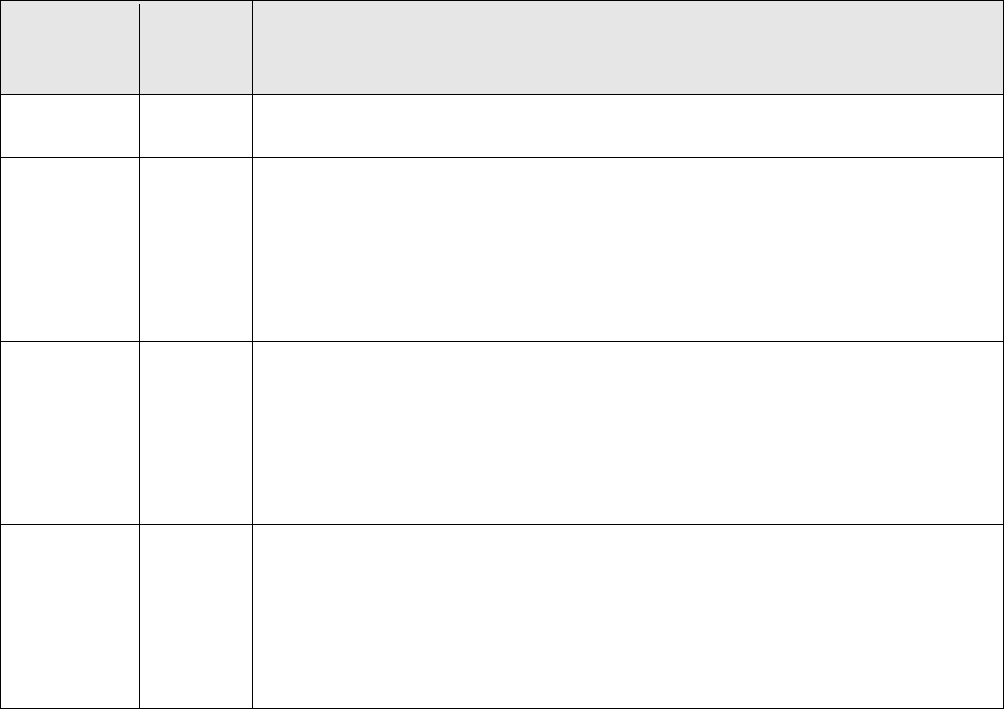
7
Level
Mark
AO2: Explain, comment on and analyse how writers use language
and structure to achieve effects and influence readers, using
relevant subject terminology to support their views.
0
No rewardable material.
Level 1
1–2
Comment on the language and/or structure used to achieve
effects and influence readers, including use of vocabulary.
The selection of references is valid, but not developed.
NB: The mark awarded cannot progress beyond the top of Level
1 if only language OR structure has been considered.
Level 2
3–4
Explanation of how both language and structure are used to
achieve effects and influence readers, including use of
vocabulary and sentence structure.
The selection of references is appropriate and relevant to the
points being made.
Level 3
5–6
Analysis of how both language and structure are used to achieve
effects and influence readers, including use of vocabulary,
sentence structure and other language features.
The selection of references is discriminating and clarifies the
points being made.
PMT

8
Question
Number
Indicative content
4
Reward responses that evaluate how successfully the attempt to create an
atmosphere of suspense is achieved.
References to the writer’s techniques should only be credited at Level
2 and above if they support the critical judgement of the text.
Responses may include:
the writer securely establishes the commanding character of the Count,
‘Let me advise you, my dear young friend’, which creates an initial sense
of foreboding. Some may see his friendly tone as patronising and
threatening towards the narrator, so beginning the passage with the
creation of suspense
the Count’s repeated warning, emphatically stated with, ‘Be warned!’,
directly creates a sense of doubt in the reader
the personification of the setting of the castle itself as being ‘old’ and
with ‘many memories’ creates a sense of nightmarish claustrophobia as
the narrator is within the malevolent castle and unable to escape from it
the writer creates a growing sense of insecurity through the Count’s
‘gruesome’ gesture of washing his hands. This is shocking and callous
and indicates that there are powerful forces at work that the Count can
only warn the narrator about, not protect him from
the first paragraph uses vocabulary and imagery which draws on the
gothic themes including fear and uncertainty: ‘the unnatural, horrible net
of gloom and mystery’
the short sentence opening the second paragraph indicates that the
narrator has gone straight to his room as it is one of the few places he
can feel safe in the mysterious castle
after the heavy warnings at the opening of the passage, suspense is
subtly created through the insertion of the section where the narrator
gains relief from observing the beauty of the night
ironically, the expectation of fear and terror that the Count had warned
the narrator about does not come from the castle, rather it comes from
outside the castle and in the person of the Count himself
the manner in which the narrator ‘drew back behind the stonework’
creates a furtive sense of seeing something that one is forbidden to see,
and so creates suspense
the reader is momentarily lulled into a false sense of security by the
narrator’s initial reaction of amusement to seeing ‘the Count’s head
coming out from the window’
the depiction of the Count as a ‘creature’, ‘a lizard’ and some ill-defined
winged being, creates shock and fear and is the culmination of the
suspense that has been built up
PMT
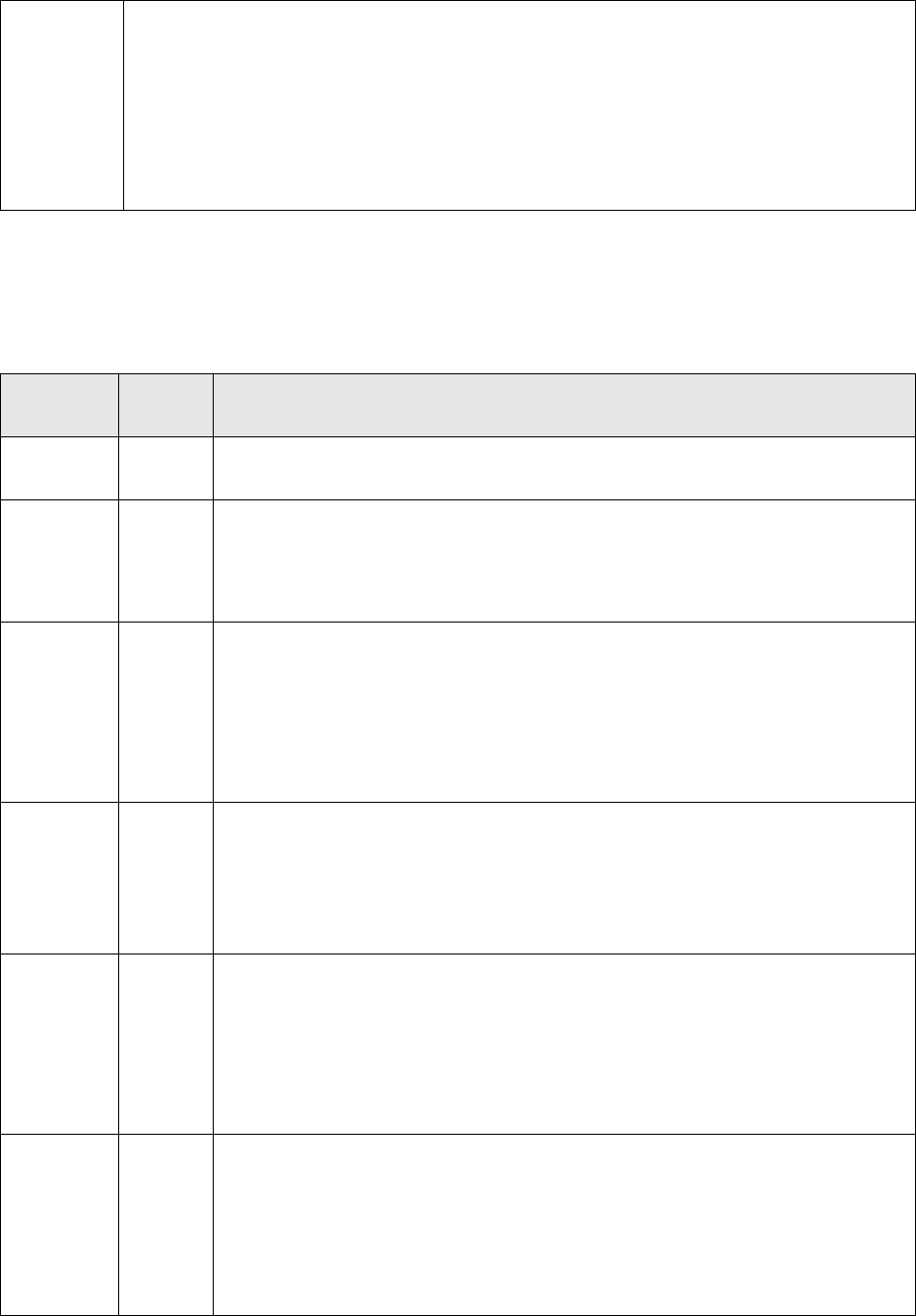
9
the final sentence powerfully encompasses the fears of the narrator:
‘dread’, ‘horrible’, ‘I am in fear’, ‘no escape’, ‘encompassed about with
terrors’
the final ellipsis leaves the reader to ponder upon what may happen
next to our unfortunate narrator.
(15 marks)
Level
Mark
AO4: Evaluate texts critically and support this with
appropriate textual references
0
No rewardable material.
Level 1
1–3
Description of ideas, events, themes or settings.
Limited assertions are offered about the text.
The use of references is limited.
Level 2
4–6
Comment on ideas, events, themes or settings.
Straightforward opinions with limited judgements
are offered about the text.
The selection of references is valid, but not
developed.
Level 3
7–9
Explanation of ideas, events, themes or settings.
Informed judgement is offered about the text.
The selection of references is appropriate and
relevant to the points being made.
Level 4
10–12
Analysis of ideas, events, themes or settings.
Well-informed and developed critical judgement is
offered about the text.
The selection of references is appropriate, detailed
and fully supports the points being made.
Level 5
13–15
Evaluation of ideas, events, themes or settings.
There is a sustained and detached critical overview
and judgement about the text.
The selection of references is apt and discriminating
and is persuasive in clarifying the points being made.
PMT

10
Section B: Imaginative Writing
Refer to the writing assessment grids at the end of this section when marking
Question 5 and Question 6.
Question
Number
Indicative content
*5
Purpose: to write a real or imagined piece about a time when the candidate
visited a place that was new to them. This may involve a range of approaches,
including: description, anecdote, speech, narrative and literary techniques.
Audience: the writing is for a general readership. Candidates can choose to
write for an adult audience or an audience of young people.
Form: the response may be narrative, descriptive or monologue.
There should be clear organisation and structure with an introduction,
development of points and a conclusion. Some candidates may intentionally
adapt their language and style to their audience by using, for example, a more
informal or colloquial approach. Candidates may introduce some literary
elements.
Responses may:
use the passage to inspire writing, possibly producing writing that is
influenced by gothic or fantasy texts
write about any kind of visit, for example holidays, school trips and
visiting relatives, developing thoughts and feelings about the impact of
the new place
use appropriate techniques for creative writing: vocabulary, imagery,
language techniques
use a voice that attempts to make the piece interesting and believable
for the chosen audience
demonstrate particular understanding of the form used
be written in a register and style appropriate for the chosen form,
which may include colloquial elements, dialogue within description or
narrative, or a sustained single voice in a monologue.
(40 marks)
(includes 16 marks for the range of vocabulary and sentence structures
for clarity, purpose and effect, with accurate use of spelling and
punctuation)
PMT

11
Question
Number
Indicative content
*6
Purpose: to write a real or imagined piece about a time when the candidate,
or someone known to them, experienced something that was amazing or
surprising. This may involve a range of approaches, including: description,
anecdote, speech, narrative and literary techniques.
Audience: the writing is for a general readership. Candidates can choose to
write for an adult audience or an audience of young people.
Form: the response may be narrative, descriptive or a monologue.
There should be clear organisation and structure with an introduction,
development of points and a conclusion. Some candidates may intentionally
adapt their language and style to their audience by using, for example, a
more informal or colloquial approach. Candidates may introduce some
literary elements.
Responses may:
use the images to inspire writing; for example, some may choose to
write about genuine moments of amazement or surprise or may take
their inspiration from the images
take their inspiration from the reading text and produce writing in a
gothic or fantasy genre
write about the amazing or surprising event itself, whilst others may
adopt a more reflective approach, developing a range of thoughts and
feelings about the impact of the experience on themselves and others
write about more than a single event or experience
use appropriate techniques for creative writing: vocabulary, imagery,
language techniques
use a voice that attempts to make the piece interesting and believable
to the chosen audience
demonstrate particular understanding of the form used
be written in a register and style appropriate for the chosen form,
which may include colloquial elements, dialogue within description or
narrative, or a sustained single voice in a monologue.
(40 marks)
(includes 16 marks for the range of vocabulary and sentence structures
for clarity, purpose and effect, with accurate use of spelling and
punctuation)
PMT

12
Writing assessment grids for Question 5 and Question 6
AO5:
Communicate clearly, effectively and imaginatively, selecting and adapting
tone, style and register for different forms, purposes and audiences.
Organise information and ideas, using structural and grammatical features to
support coherence and cohesion of texts.
Level
Mark
The candidate:
0
provides no rewardable material
Level 1
1–4
offers a basic response, with audience and/or purpose not fully
established
expresses information and ideas, with limited use of structural
and grammatical features
Level 2
5–9
shows an awareness of audience and purpose, with
straightforward use of tone, style and register
expresses and orders information and ideas; uses paragraphs
and a range of structural and grammatical features
Level 3
10–14
selects material and stylistic or rhetorical devices to suit
audience and purpose, with appropriate use of tone, style and
register
develops and connects appropriate information and ideas;
structural and grammatical features and paragraphing make
meaning clear
Level 4
15–19
organises material for particular effect, with effective use of
tone, style and register
manages information and ideas, with structural and
grammatical features used cohesively and deliberately across
the text
Level 5
20–24
shapes audience response with subtlety, with sophisticated and
sustained use of tone, style and register
manipulates complex ideas, utilising a range of structural and
grammatical features to support coherence and cohesion.
PMT
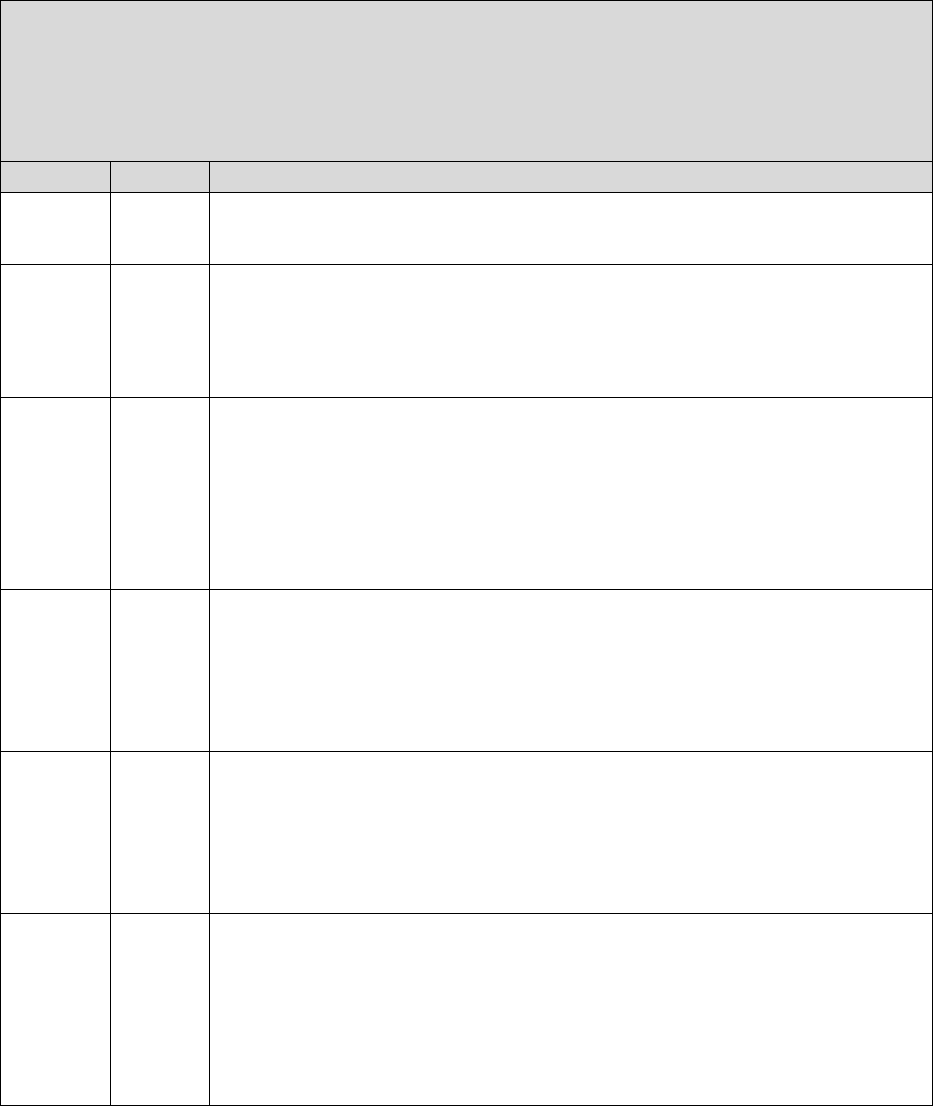
13
AO6:
Candidates must use a range of vocabulary and sentence structures for clarity,
purpose and effect, with accurate spelling and punctuation
Level
Mark
The candidate:
0
provides no rewardable material
Level 1
1–3
uses basic vocabulary, often misspelled
uses punctuation with basic control, creating undeveloped,
often repetitive, sentence structures
Level 2
4–6
writes with a range of correctly spelt vocabulary, e.g. words
with regular patterns such as prefixes, suffixes, double
consonants
uses punctuation with control, creating a range of sentence
structures, including coordination and subordination
Level 3
7–9
uses a varied vocabulary and spells words containing irregular
patterns correctly
uses accurate and varied punctuation, adapting sentence
structure to contribute positively to purpose and effect
Level 4
10–12
uses a wide, selective vocabulary with only occasional spelling
errors
positions a range of punctuation for clarity, managing sentence
structures for deliberate effect
Level 5
13–16
uses an extensive vocabulary strategically; rare spelling errors
do not detract from overall meaning
punctuates writing with accuracy to aid emphasis and
precision, using a range of sentence structures accurately and
selectively to achieve particular effects.
PMT
